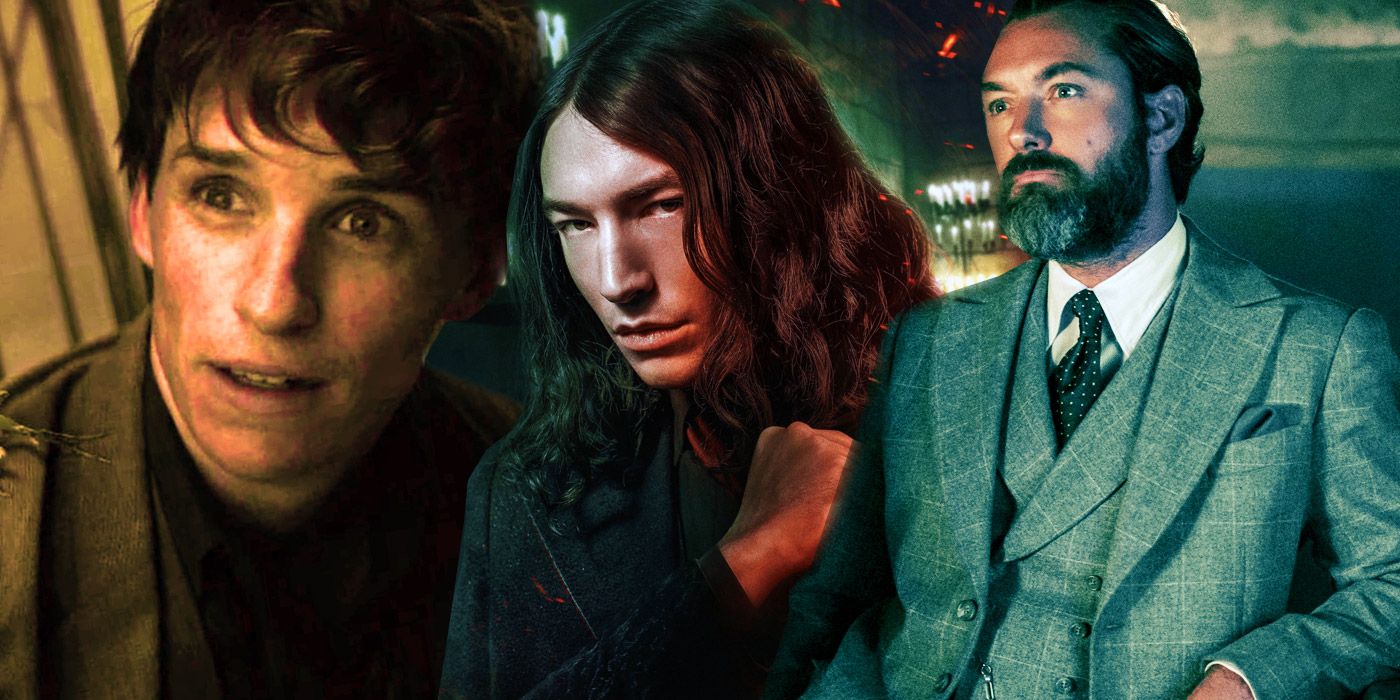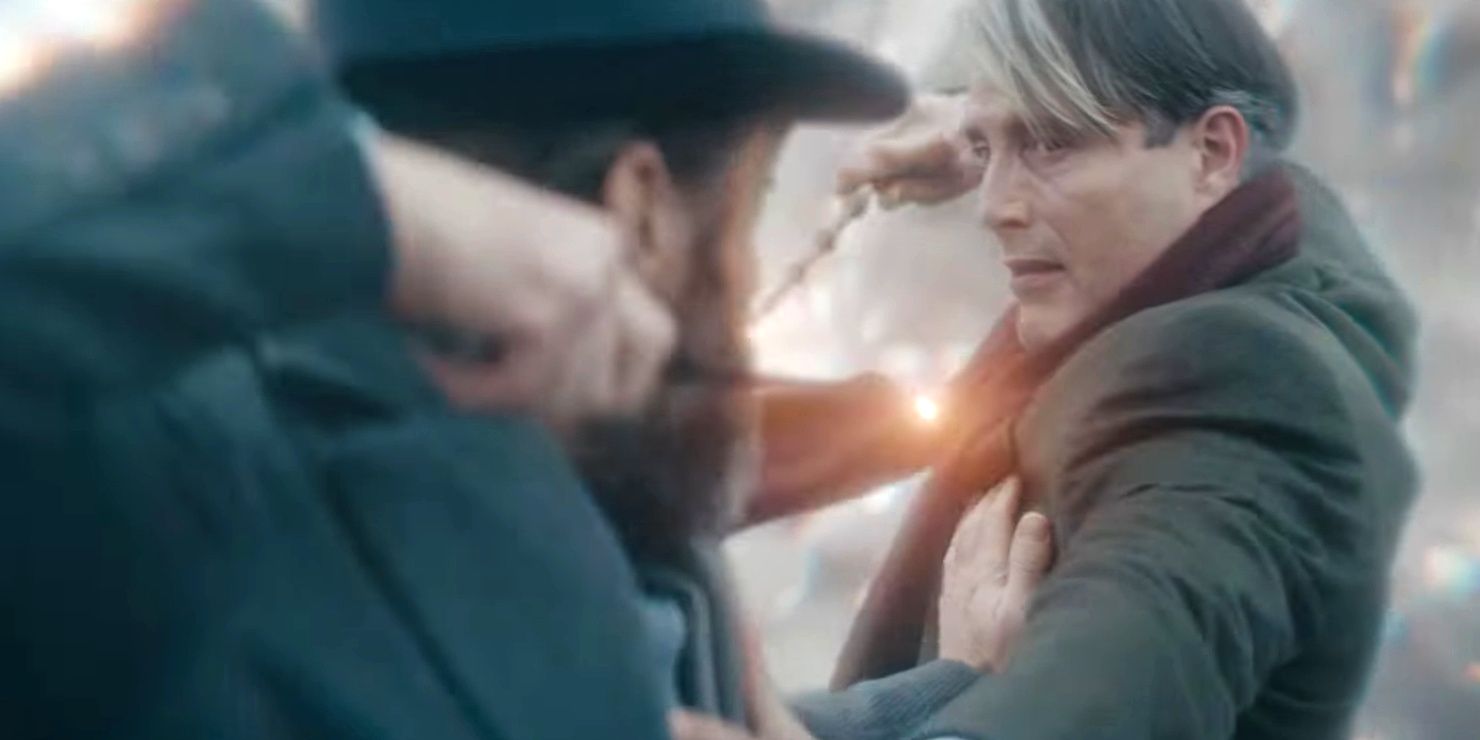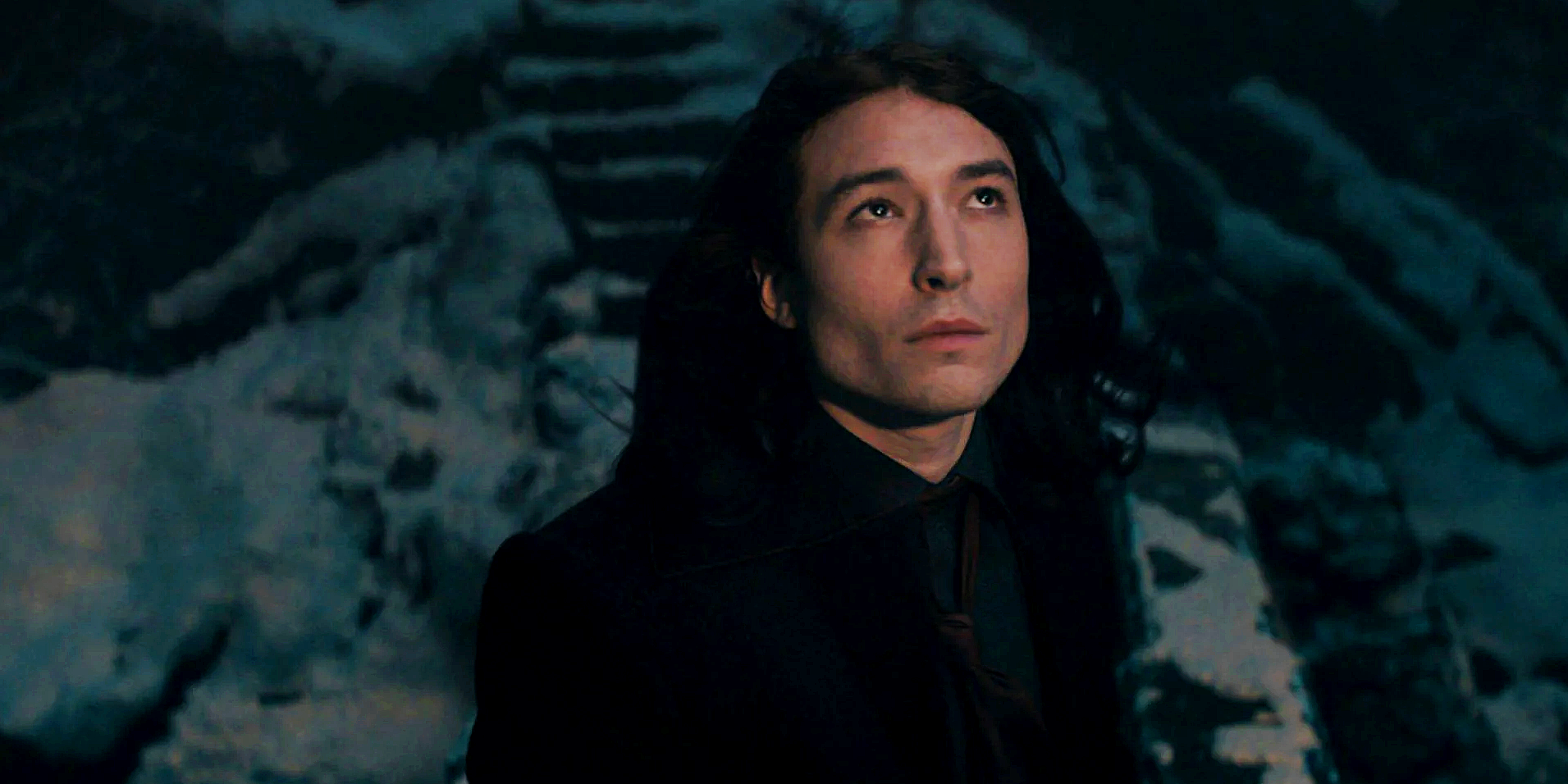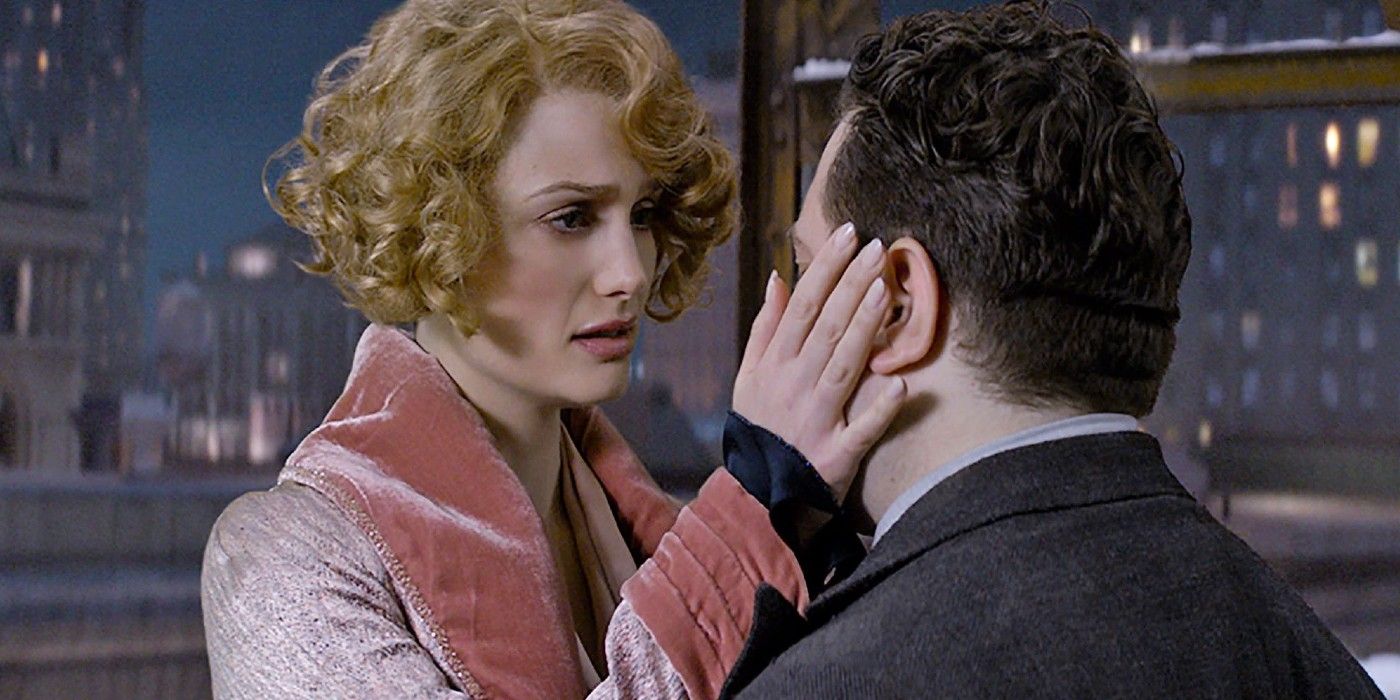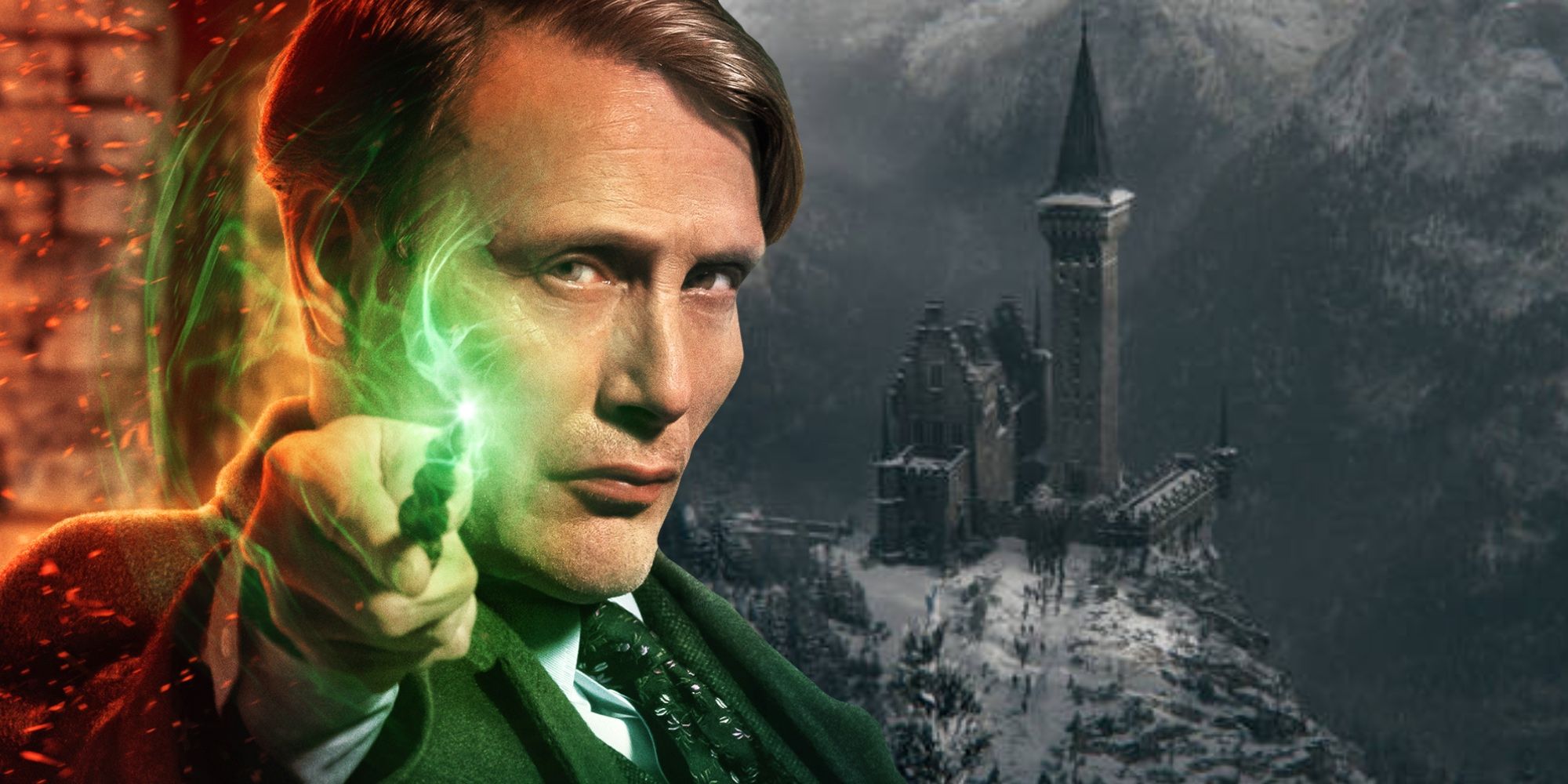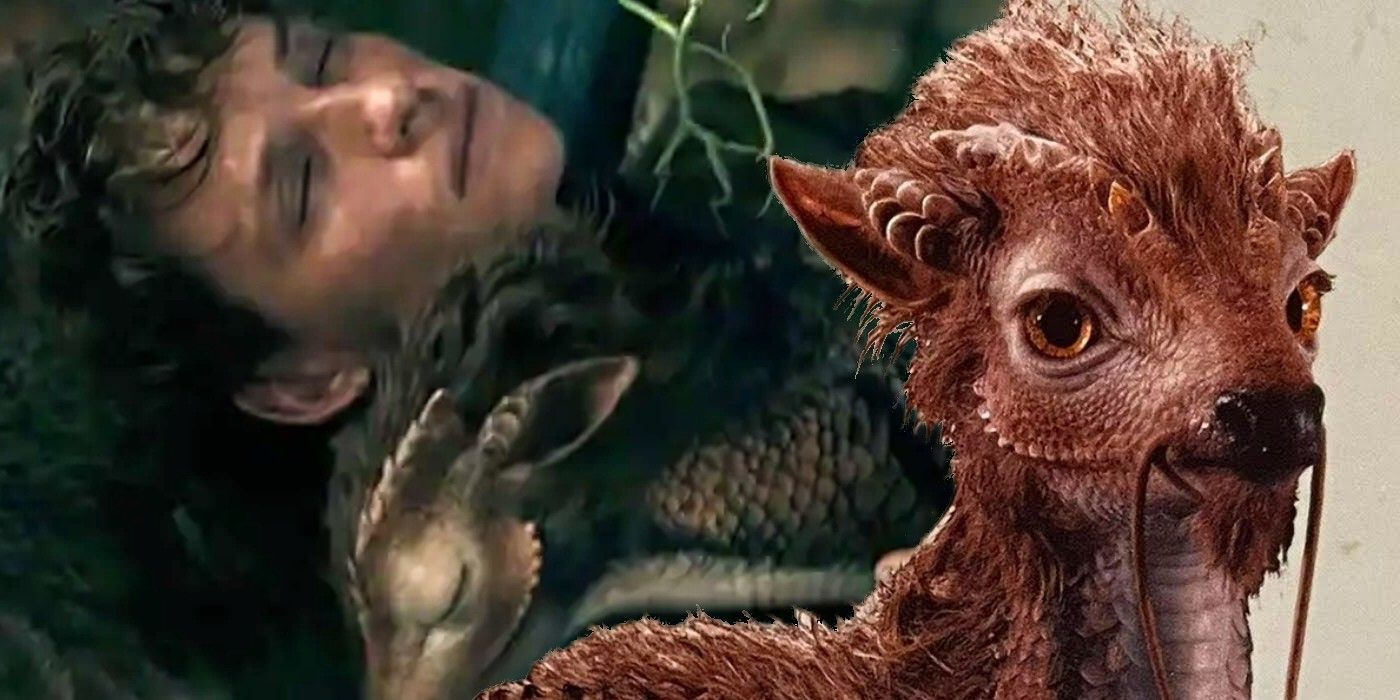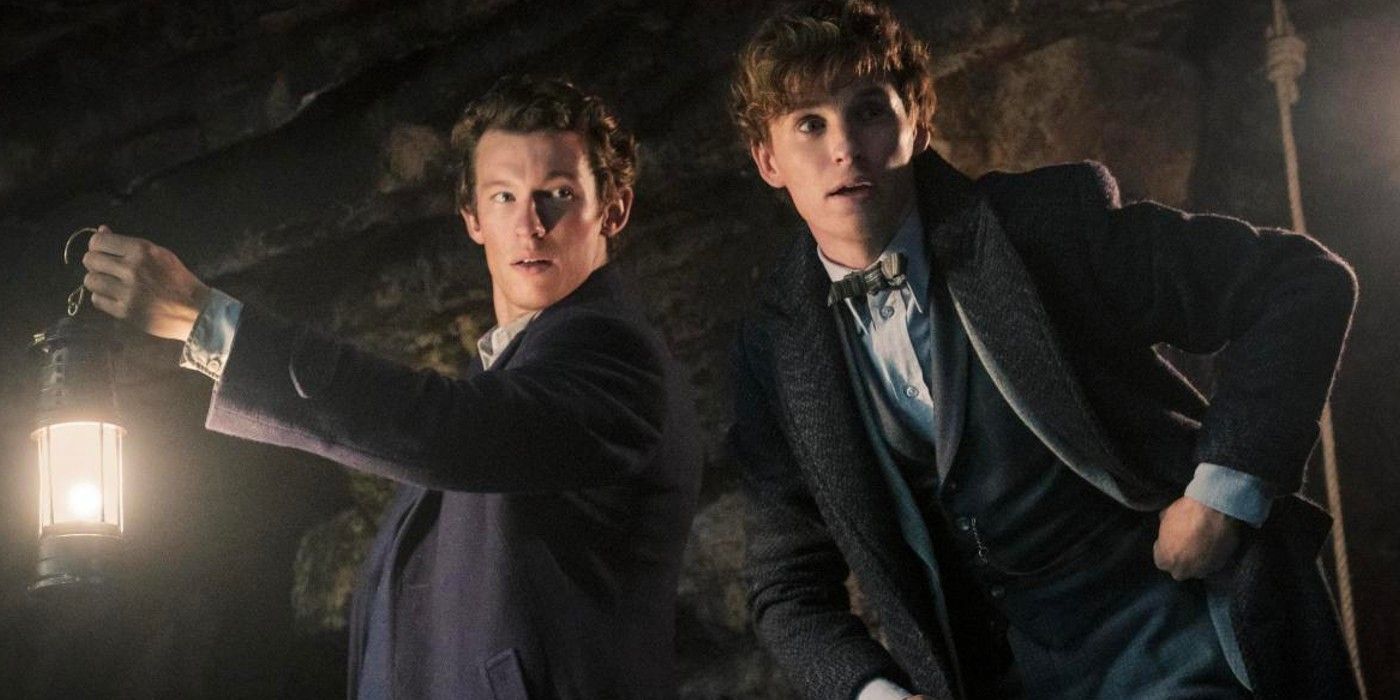Warning! SPOILERS for Fantastic Beasts: The Secrets of Dumbledore.
The Fantastic Beasts franchise recently released its third film installment Secrets of Dumbledore, which manages to fix six major issues from the previous movies. From mending Queenie Goldstein's character development to adjusting the portrayal of Gellert Grindelwald, Fantastic Beasts: The Secrets of Dumbledore succeeds in restoring the gravity of its elaborate world-building. The film's accomplishments of repairing problematic character and plot-based elements help elevate it into arguably the best installment in the franchise.
Secrets of Dumbledore starts its story by establishing the importance of a new beast, The Qilin, a magic creature resembling a deer that elects whoever is purest of heart to be the wizarding world's official Supreme Mugwump. Grindelwald attempts dark magic to enchant a deceased Qilin he's killed in order to be elected as the new head of the International Confederation of Wizards but is thwarted by Fantastic Beasts' magizoologist Newt Scamander and the rest of Dumbledore's army. Secrets of Dumbledore's emotional center hinges on the relationship between Dumbledore and Grindelwald, as well as the clarification of Credence Barebone's backstory.
While Fantastic Beasts And Where To Find Them was received well by critics and fans alike, its dispraised sequel Crimes of Grindelwald exacerbated pre-existing issues in its plot while creating new ones. The character of Queenie Goldstein completely inverts in personality and morality as her motivations begin to lean towards the antagonist's side, despite minimal reasoning. Jude Law's Dumbledore is barely given any screen time to validate the point of his character's return to the Harry Potter franchise and his past romance with Gellert Grindelwald is painstakingly evaded in the narrative. Including these big problems, below are the residual issues Fantastic Beasts: The Secrets of Dumbledore fixes.
Fantastic Beasts 3 Properly Shows Dumbledore & Grindelwald’s Relationship
While Grindelwald and Dumbledore's turbulent relationship has been hinted at since the original Harry Potter movies, the nuances revolving around what their dynamic entails have remained troublesomely vague until Secrets of Dumbledore. In Crimes of Grindelwald, Dumbledore elusively claims his relationship with Grindelwald extended beyond brotherly love which highlights the major issue in the portrayal of their relationship. Their romance is avoided as a topic and only a vague implication that retracts from its importance in the Fantastic Beasts narrative. The romance they shared in their youth is an integral aspect of their characters and their impending opposition. Secrets of Dumbledore finally delves into the reason Dumbledore cannot fight Grindelwald. The blood pact they created when they were intertwined romantically makes it so they cannot go against each other and serves as a tragic turning point in their dynamic when it breaks. Not only does SOD refuse to evade the fact they are past lovers, but it uses the lingering love between Grindelwald and Dumbledore to heighten the movie's emotional execution.
Credence’s Backstory & Identity Twist Is Much Better In Secrets Of Dumbledore
One of the most glaring problems in the Fantastic Beasts franchise is the prospect of Credence Barebone's purpose. He is established as a neglected orphan with a gravitation toward dark magic in Fantastic Beasts And Where To Find Them but returns for Crimes of Grindelwald in a narrative that sympathizes with his character further. Credence's story in the first film contains a clear beginning, middle, and end. The reasons for his return are unclear at best in COD where we find out his journey to discover himself earns him the knowledge that he's a Dumbledore. This hereditary reveal is wholly unearned in Crimes of Grindelwald but receives a genuinely effective payoff in Secrets of Dumbledore.
Instead of this reveal becoming a catalyst for Credence's villainous origins (which he experienced and resolved in the first film), his relation to the Dumbledores gives Fantastic Beasts an opportunity to allow both Credence and Dumbledore's brother closure. Dumbledore's brother Aberforth shows residual resentment towards how his sister died. Being able to meet his long-lost son gives him a final opportunity to say goodbye and prove his love to a dying family member. The emotional conclusion of Credence learning he is accepted by a family works to tie up the loose ends of his flailing narrative in Crimes of Grindelwald, serving as a great moment of resistance against Grindelwald's evil influence.
Queenie Goldstein (& Her Relationship With Jacob) Is Fixed In Fantastic Beasts 3
Another major issue of the franchise is the character development of Queenie Goldstein and her subsequent relationship troubles with Jacob. Queenie is shown to be an immensely powerful yet humble witch in Fantastic Beasts and Where to Find Them. Her immediate attraction to Jacob which soon flourishes into love is one of the most memorable aspects of the original film but Crimes of Grindelwald tarnishes it by changing Queenie entirely. Her newfound behavior, which involves mind-controlling Jacob and becoming a follower of Grindelwald, goes against her most poignant traits of being kind-hearted and righteous. To have Queenie become a follower of Grindelwald and choose to join his cause over staying with Jacob is never reasoned by the narrative and causes issues that Secrets of Dumbledore attempts to fix. While Fantastic Beasts still obfuscates the actual reason as to why she joined Grindelwald, Queenie's pure love for Jacob is back in full force in Secrets of Dumbledore. The movie humanizes her again by displaying relatable internal conflicts within her character that serve to separate Queenie from Grindelwald and his cause by the end of the film when she chooses Jacob again. Their wedding doesn't feel entirely earned, but it fixes Queenie's out-of-place antagonist turn from the previous installment.
Mads Mikkelsen's Grindelwald Is What The Villain Always Should Have Been
Sometimes recasting a major character can be disastrous, but the choice for Mads Mikkelsen to take on the role of Grindelwald after Johnny Depp couldn't has been more advantageous for the Fantastic Beasts franchise. For the first two films in the series, Grindelwald's motivations and morals are muddled to an extent that it's difficult to gauge whether his intentions come from a good place or not. However, Mikkelsen's rendition of Grindelwald brings the necessary evil demeanor the character needed to clarify his position in the wizarding world, while he also exudes a sensitive side that helps rationalize how Grindelwald can charm and manipulate so many followers. Mikkelsen also has a talent for fluctuating between gentle and terrifying which refines Gellert Grindelwald's original subpar intimidation. Crimes of Grindelwald fails to make Grindelwald intimidating by focusing too heavily on convoluted expository dialogue and overt predatory displays, such as his manipulation of Queenie, to prove his villainy.
Though Johnny Depp plays an effective villain for the content he was given to work with, his version of Grindelwald isn't what the franchise should have aimed for to begin with. Mikkelsen brings both charm and genuine intimidation to the character like due to his vast experience playing villains. Specifically, his performance is most reminiscent of his portrayal of Hannibal Lecter in the NBC psychological horror series Hannibal. Similarly, Hannibal is a nearly irredeemable villain that shares an ill-fated romance with the profiler Will Graham (Hugh Dancy). Mikkelsen brings the same level of chemistry he shared with Dancy to his scenes with Jude Law in Secrets of Dumbledore, adding incredibly sympathetic depths to an otherwise one-note villain.
Secrets Of Dumbledore Remembers The Fantastic Beasts Part Of Its Title
One of the major criticisms of Crimes of Grindelwald was its underutilization of the beasts themselves. The second film focuses mainly on the politics of Gellert Grindelwald and the relationship between Newt and his family and friends. To introduce a wave of new characters and also set up for the next film, Crimes of Grindelwald's packed story ends up having little room to spotlight the magical beasts that give the franchise its namesake. Secrets of Dumbledore fixes this issue by introducing The Qilin. Not only does The Qilin have a fantastical and unique design, but its existence is fundamental for the plot to function. The importance of the beasts being reestablished in the franchise reminds audiences why the first film was a success. Beyond The Qilin and its interesting mythology as the key in wizarding elections, there are other new and even reoccurring beasts that get an appropriate amount of screen time in Secrets of Dumbledore. The fan-favorite Niffler returns in all his kleptomaniacal glory as a device of comic relief. A newer beast is the cave crabs that Newt and Theseus must dance alongside to escape the cave unscathed and alive which expands upon the beastly world-building the first film started strong with.
Newt & Theseus' Story Gets Greater Development In Fantastic Beasts 3
Despite Crimes of Grindelwald spending an enormous amount of time establishing the frigid dynamic between Newt Scamander and his brother Theseus, the film never quite rationalizes where their love for each other stems from. Newt Scamander's referential feelings towards his brother's fiancée Leta Lestrange add to the unavoidable rift between them while lumping more unelaborated exposition into the convoluted plot. Their banter and irritation with each other are exacerbated as an obvious excuse for conflict. Crimes of Dumbledore never effectively displays the apparent mutual love they have for each other which makes later suspenseful scenes where they act protective or loving fall flat. In Secrets of Dumbledore, adjustments are made towards their rapport and screen time together. Rather than continuing to exacerbate the rift between them with the forced Leta Lestrange narrative, Newt and Theseus' relationship is built upon through personal adventures they go on together such as the comedic crab cave sequence. The plot points of Dumbledore's sister and his damaged relationship with Aberforth parallel their dynamic and helps highlight the strengths of their bond.
While it didn't fix every issue the Fantastic Beasts franchise has accumulated, Secrets of Dumbledore still repairs many of the most glaring. The recast of Mads Mikkelsen as Grindelwald especially helps elevate the film into a fresh experience for Harry Potter fans that may require his return to feasibly expand the rejuvenated series. From appreciating the worth of the fantastic beasts themselves to respecting the preestablished character arcs, Secrets of Dumbledore succeeds in fixing its six biggest Fantastic Beasts problems.

